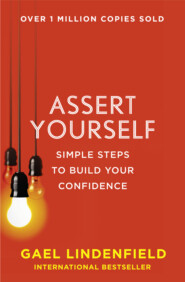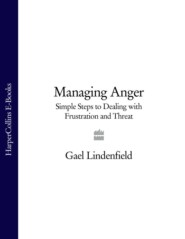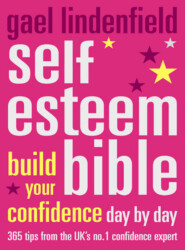По всем вопросам обращайтесь на: info@litportal.ru
(©) 2003-2024.
✖
The Positive Woman
Автор
Год написания книги
2018
Настройки чтения
Размер шрифта
Высота строк
Поля
6. Reward yourself – it may be a long time before you reach your desired carrot so you will need to find some way of encouraging and supporting yourself along the route. We now know that rewards are much more effective than punishments in any learning process.
Make sure that the rewards you give yourself at each stage are appropriate and that you save the big treats for the harder habits.
Overcoming negative thinking
The quality of your thoughts determines the quality of your life.
Vera Peiffer
There are four steps which you can take to break your negative thinking habits and replace them with more positive patterns. These are:
1) Expose and confront your existing negative attitudes.
2) Adopt new positive approaches.
3) Expand your thinking powers.
4) Increase your exposure to positive thoughts.
Much negative thinking is essentially irrational – it is not based on well-considered facts and sound theories! It is directed by feeling and prejudice rather than logic and reason. Very often there can be some basis of truth in the arguments presented by this mode of thinking, but they rarely give the full picture. The process of censorship is often unconscious and is a habit ingrained over many years. We may be totally unaware of our discriminatory practices although sometimes the ‘madness’ of our thinking may be blindingly obvious to others. We may hear:
‘You’re just being your usual pessimistic self.’
‘Don’t be so daft – how on earth can an intelligent woman like you talk like that?’
– but still remain convinced in our pessimism because we feel we are right, and so we defiantly defend our opinion. Yet our feelings and opinions are controlled by the parts of our personality which are not best equipped to make logical and rational decisions.
In my book Super Confidence I summarized some of Eric Berne’s Transactional Analysis theory, which may help you to understand more fully how your personality and its ‘censorship’ strategies work. As with many such theoreticians (including Freud!), Berne suggested that our personality has three fairly distinct sections and that each of these has a different approach to the world. In short, these are:
– the Parent, which is the part where our values and opinions lie; we use it when we are looking after, supporting, controlling, judging and taking responsibility for ourselves or others
– the Adult, which is the part we use when we are being rational, objective and calculating
– the Child, which is the part we use when we are being emotional, intuitive, creative, manipulative, rebellious, submissive, etc.
Each part has its uses and the secret of a healthy well-functioning personality is that each part is used appropriately. For example, we can use:
– the Parent to care for ourselves and others, make moral judgements and keep discipline
– the Adult to make important decisions and give considered advice
– the Child to have fun, feel the beat of the music or make passionate love.
But woe betide us if we quote too many statistics at parties, cry in a management meeting, or try to engage a mugger in rational discussion!
The ‘GEE’ strategy
Earlier, I noted that most negative thinking is heavily influenced by feeling and opinion, which are controlled by the Child and Parent parts of our personality. These two parts have invaluable uses but we have to be particularly circumspect about using them if our childhood ‘programming’ was negative. You can override conditioned responses, however, by making a conscious choice to use the Adult side of your personality rather than the Child or Parent part. So I have devised a strategy whereby you can do just this. It uses your Adult to help you analyse your thinking errors. I have called it the ‘GEE’ strategy simply so that I could use mnemonics to aid the memorizing of the three habits which need to be challenged. These are:
Generalization Exaggeration Exclusion
Generalization
This is the habit of developing a ‘no-hope’ philosophy, based on a specific subjective experience. We had plenty of examples of these when we looked at the effect childhood can have on the development of our general attitude to life, but now let’s look at the way many of us continue to reinforce these attitudes by continuing to think in a similar way as adults.
Exaggeration
This is the habit of expecting things to be worse than they really are – worrying about a potential catastrophe before there is any real evidence to suggest that one is likely to occur.
Exclusion
This is the habit of ignoring the positive aspects of something and only seeing the problems and disadvantages.
Use the next exercise to check out your own habits and then try to use the GEE strategy on a regular basis to help you spot the irrationality of your thinking when you or anyone else spots negativity in your attitude.
Exercise: The GEE strategy
Over the next week note down any specific instances when you catch yourself thinking or reacting negatively. If possible, ask someone close to you to help you identify these habits, because more often than not we ourselves find it difficult to see the wood in our forest of problems!
Then use the GEE strategy to help you analyse your negative responses and see how irrational they are.
Positive decision-making and problem-solving
In the long run we shape our lives and we shape ourselves. The process never ends until we die. And the choices we make are ultimately our own responsibility.
Eleanor Roosevelt
The next step is to replace your old habits with some new ones. You could, for example, just adopt a favourite habit of Great Britain’s Prime Minister, John Major, who is reported to approach almost every problem by just drawing a line down the centre of a piece of paper and heading one column the ‘Pros’, and the other the ‘Cons’. This simple idea is easy to remember and execute, and is certainly better than irrational negative thought. You may wish to try your hand at it and also at a couple of other techniques which I have found helpful.
FACE the Facts
This is a structure which I have devised to aid objective thinking when faced with a problem or a decision. It helps you to focus on five important aspects of the issue. Once again, I have used a mnemonic (For Against Choice Emotion) as an aide-mémoire.
If possible, don’t try and tackle each of these aspects in order of sequence or at one marathon thinking session you could restrict your creative thinking powers and your memory. Instead, put these headings on a sheet of paper or a blackboard for as long as you can before you make the decision or take any action, and then you can jot down your ideas and data as they come to you. In this way you may also gain more insight into your patterns of thinking.
At first you may find yourself filling up the AGAINST section, but as your basic mood and attitudes become more positive, the FOR section should start filling up.
Do the following exercise to give yourself some practice and then use it to help you to structure your thinking as formally as you can for a few months. After some time you may find yourself automatically thinking differently and you will not always need to go through this process although I still find it an invaluable support when I am having to make major decisions.
Exercise: FACE the Facts
Think of a decision which you are trying to make at the present or one which you have recently made. Divide a sheet of paper into five sections as I have done below (or in any other creative way you can imagine!) and use the above strategy to explore the different issues and relevant facts and feelings. I have used the example of a decision to move house.
Decision: Whether or not to take up the offer of a new job which would mean a major family move to the other end of the country.
FACTS
State of industry











